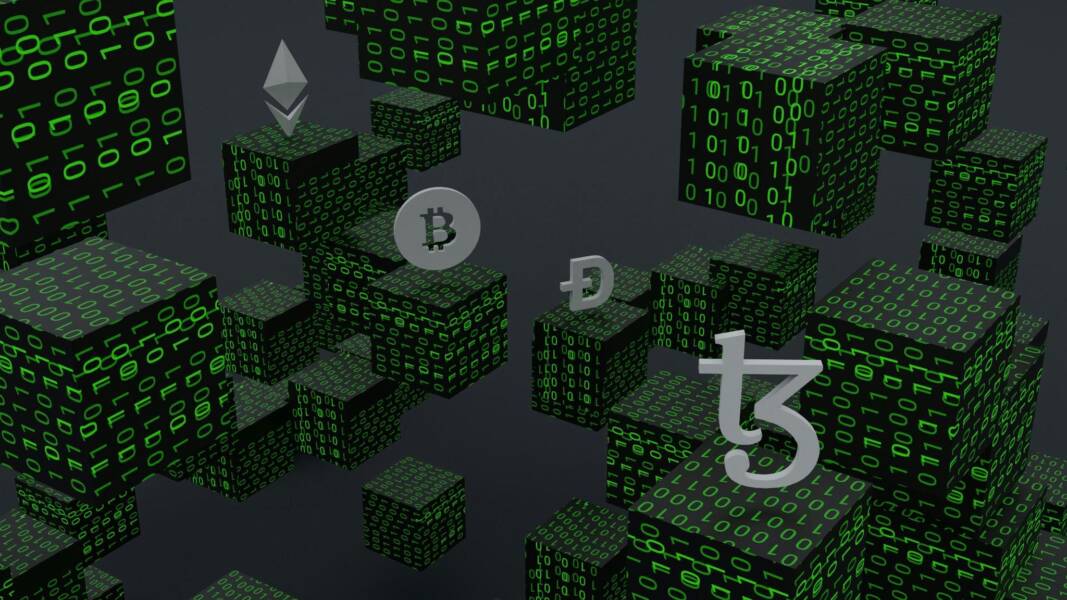In a generation in which digital transformation shapes each issue of our lives, the importance of agreement in virtual transactions has by no means been greater paramount. Blockchain era, on the grounds that its inception, has emerged as a beacon of protection and transparency, redefining the principles of acceptance as true within the virtual world. This article delves into the rise of the blockchain era, exploring its implications, applications, and the pivotal function it plays in organizing a brand new paradigm of agreement.

The Genesis of Blockchain
Blockchain generation became first conceptualized as the underlying framework of Bitcoin, the virtual currency, in 2008. It was designed as a decentralized ledger that facts transactions throughout a community of computers. The key attributes of blockchain that foster believe consist of:
- Decentralization: Unlike conventional ledgers, blockchain operates on a decentralized network, ensuring no unmarried entity has control over the entire gadget.
- Transparency: Every transaction on a blockchain is visible to all individuals, selling transparency and making it easier to audit transactions.
- Immutability: Once a transaction is recorded on a blockchain, it cannot be altered or deleted, making sure the integrity of the transaction history.
The Evolution of Trust thru Blockchain
Blockchain generation has advanced beyond cryptocurrencies, locating applications throughout diverse sectors. Here’s how blockchain is reshaping the perception of consider:
- Financial Services: Blockchain introduces an unprecedented stage of security and efficiency in financial transactions, from go-border bills to actual-time settlements.
- Supply Chain Management: It gives a transparent and immutable document of goods from production to shipping, enhancing acceptance as true among suppliers, shippers, and clients.
- Identity Verification: Blockchain can securely manipulate virtual identities, decreasing fraud and ensuring privateness.
The Role of Cryptocurrencies in Promoting Blockchain
Cryptocurrencies are regularly the first to come upon most people with blockchain technology. They exemplify the potential of blockchain in creating secure, obvious, and decentralized systems for monetary transactions. Here are some points highlighting this dating:
- Digital Currencies like Bitcoin and Ethereum are built on blockchain, demonstrating its capability to steady monetary transactions.
- Smart Contracts, enabled by using structures like Ethereum, automate agreements without intermediaries, fostering belief between events.
Tether Wallet: A Case Study in Trust and Blockchain
A compelling instance of blockchain’s capability to engender belief is seen in the use of a Tether Wallet. Tether, a stablecoin tied to the value of a fiat currency, gives a bridge among the conventional financial machine and the cryptocurrency internationally. Here’s why Tether Wallet sticks out:
- Stability: It gives a much less volatile choice for cryptocurrency buyers, being pegged to strong property like the US dollar.
- Transparency: Transactions are recorded on a blockchain, permitting users to verify transactions independently.
- Security: Utilizes blockchain’s inherent security functions to shield towards fraud and unauthorized get admission to.

The Challenges and Future of Blockchain
While blockchain offers a transformative ability for setting up accept as true with in virtual transactions, it isn’t always without its challenges:
- Scalability: High transaction expenses and slower processing times are big hurdles for blockchain networks like Bitcoin and Ethereum.
- Regulatory Uncertainty: The decentralized nature of blockchain poses regulatory demanding situations, impacting its adoption in certain jurisdictions.
Despite those challenges, the destiny of blockchain generation looks promising, with ongoing improvements aimed toward addressing its limitations. The improvement of new consensus mechanisms, sidechains, and layer 2 answers are a number of the advancements anticipated to enhance blockchain’s scalability and performance.
Blockchain and Environmental Sustainability: A New Frontier
As blockchain generation matures, its effect extends beyond digital transactions and economic structures, reaching into the world of environmental sustainability. Innovators are exploring how blockchain can address important environmental demanding situations, such as carbon footprint tracking, renewable energy trading, and deliver chain sustainability. Here’s how blockchain is contributing to a greener planet:
- Carbon Credit Trading: Blockchain platforms facilitate obvious and reliable carbon credit score trading, enabling groups to offset their carbon emissions effectively.
- Renewable Energy Distribution: By enabling peer-to-peer power trading, blockchain allows families with renewable electricity resources, like solar panels, to sell excess energy immediately to neighbors, optimizing renewable electricity utilization.
- Sustainable Supply Chains: Blockchain’s transparency aids in verifying the sustainability practices of suppliers, ensuring products are sourced ethically and sustainably.
Embracing the Blockchain Revolution
The adventure of blockchain from a unique concept to a generation shaping the future of belief and sustainability is tremendous. As we stand at the cusp of this technological revolution, the capability for blockchain to transform industries and address global challenges is monstrous. Yet, the path ahead calls for collaboration, innovation, and a commitment to overcoming its demanding situations. By embracing blockchain, we are able to liberate a destiny wherein virtual consideration is implicit and our environmental obligations are met with robust, transparent solutions. The blockchain revolution is here, and its impact may be felt for generations to come.

TechnologyHQ is a platform about business insights, tech, 4IR, digital transformation, AI, Blockchain, Cybersecurity, and social media for businesses.
We manage social media groups with more than 200,000 members with almost 100% engagement.










































